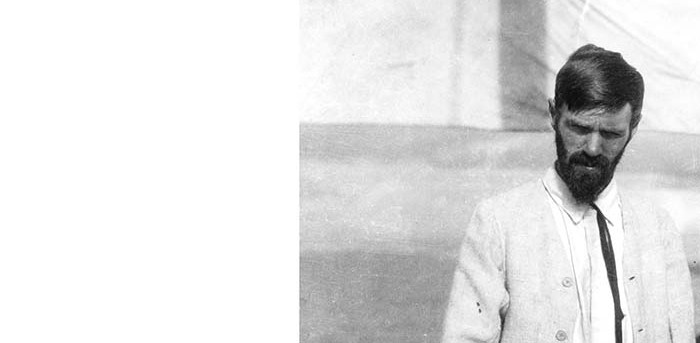The University of Nottingham
 Exchange online
Exchange online
Research Exchange
Unpublished DH Lawrence manuscript discovered, revealing a blistering attack on 1920s misogyny

An unpublished manuscript by DH Lawrence attacking a particularly abhorrent form of 1920s sexism has been discovered in an archive in New Zealand.
Dr Andrew Harrison, Lecturer in English Literature at The University of Nottingham, found the manuscript among the papers of John Middleton Murry, which were recently acquired by the Alexander Turnbull Library in Wellington.
The 185-word piece is a response to a short article — ‘The Ugliness of Women’ — which appeared in the April 1924 number of the Adelphi, a monthly journal edited by Murry, to whose early volumes Lawrence was a major contributor.
In ‘The Ugliness of Women’, ‘JHR’ (thought to be an electrical engineer named John Hall Rider) describes the horrified recoil he has always felt from beautiful women. He explains his strong response by arguing that “in every woman born there is a seed of terrible, unmentionable evil: evil such as man — a simple creature for all his passions and lusts — could never dream of in the most horrible of nightmares, could never conceive in imagination.” He asserts that the evil to which he refers in his article is “so subtle in expression that only a beautiful face can transmit it.”
‘Meat-lust’
JHR invited readers of the Adelphi to offer a better explanation for his revulsion from beautiful women; Lawrence took up this challenge with great enthusiasm, using startling imagery and strong words to make his point. Lawrence suggests that JHR’s disgust at women is created by his horror at the ‘slightly obscene desires’ they arouse in him, comparing JHR’s response to beautiful women to that of a coyote howling when it smells fresh meat.
Lawrence notes that “The hideousness he [JHR] sees is the reflection of himself, and of the automatic meat-lust with which he approaches another individual,” and he ends his riposte on an extraordinarily enlightened and forward-thinking note: “Even the most “beautiful” woman is still a human creature. If he [JHR] approached her as such, as a being instead of as a piece of lurid meat, he would have no horrors afterwards.”
The response was never published, probably because it was felt to libel JHR, but Murry may also have thought that it was too crude or savage for the Adelphi.
The piece (published for the first time in an article by Dr Harrison in the Times Literary Supplement, 29 March 2013) is thought to have been written in London between 12 December 1923 and 5 March 1924, during Lawrence’s brief return to Europe from Mexico.
“This is an important and timely discovery,” said Dr Harrison. “I hope that the short piece will cause people to question what they think they know about Lawrence’s attitude to women. It reveals Lawrence’s enlightened attitude to gender issues, and his acuteness in detecting and exposing sexist attitudes.”
Leave a Reply
Other

Top prize for quantum physicist
A University of Nottingham physicist has won a prestigious medal from the Institute of Physics for […]

Zero carbon HOUSE designed and built by students comes home
Design and construct a low cost, zero carbon, family starter home, transport it to Spain, build […]